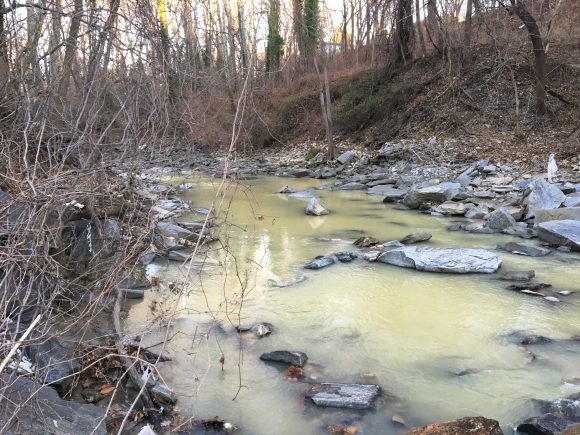Victory! Court Rules in Favor of Blue Water Baltimore and requires EPA to act on Stormwater Pollution
By: Baltimore Harbor Waterkeeper

By Baltimore Harbor Waterkeeper Angela Haren. Reposted with permission from Blue Water Baltimore.
A federal district court in Maryland ruled last week that the U.S. Environmental Protection Agency (EPA) wrongfully denied our petition to regulate stormwater runoff from commercial, industrial, and institutional sites in the Back River watershed. Blue Water Baltimore and its allies took this fight against dangerous stormwater discharges to court so that polluters who contribute to the runoff of contaminants into our waterways are made to clean up their own mess. Along with co-plaintiffs Natural Resources Defense Council (NRDC) and American Rivers, Blue Water Baltimore brought this lawsuit against EPA for failing to require industrial and commercial polluters in the Back River watershed to pay for the clean-up of harmful runoffs from their properties.
Municipal governments currently bear the lion’s share of the responsibility for cleaning up stormwater pollution, but a significant amount of that pollution comes from private commercial, industrial, and institutional sites. Because these sites contain extensive impervious areas, like parking lots and rooftops, they consistently discharge large quantities of contaminants into local rivers and streams. Under the federal Clean Water Act, if EPA determines that a category of stormwater discharges is contributing to water quality violations, the agency must require those dischargers to apply for permits. Those permits would then mandate actions to be taken to limit the amount of polluted runoff.
In 2015, Blue Water Baltimore and its partners petitioned EPA to exercise this so-called “residual designation authority” for privately-owned commercial, industrial, and institutional sites that contribute to stormwater pollution in the Back River watershed, which empties into the Chesapeake Bay and includes the Chinquapin Run, Moores Run, Herring Run, and Redhouse Creek. We provided the agency with unequivocal evidence that stormwater discharges from these sites are contributing to water quality standards violations in our watershed, and asked the agency to require Clean Water Act permits for these discharges. EPA denied our petition, without making any determination about whether these sites are contributing to water quality standards violations in our watershed. Instead, the agency decided it would rather not decide.
We took EPA to court, and the court ruled that the agency broke the law by ducking the question presented in our petition. The court has ordered EPA to evaluate the evidence we’ve submitted and make the findings in response to our petition that the Clean Water Act requires.
The Back River is considered legally “impaired” by nitrogen, phosphorus, and sediment pollution in stormwater runoff from the area’s urban land use. Out of all of the stormwater sources, the industrial sites in question contribute at least 33% of total phosphorus loadings, 42% of total nitrogen loadings, and 46% of sediment loadings in the watershed. In fact, studies suggest that these sites contribute triple the amount of pollutants that the entire Back River would receive from the watershed under natural conditions. Excessive amounts of nitrogen and phosphorus can cause direct harm to our waterways and the people who use them. Acting as an unintended fertilizer, these chemicals feed algal blooms, including the strain Karlodinium which is toxic to fish and humans. And whether toxic or not, when any type of algae bloom starts to die off, the bacteria that feed on the decomposing algae can deplete oxygen levels in the water and cause fish to die off.
Currently, these facilities currently have no obligation to clean up or minimize their stormwater runoff. Instead, municipalities bear the burden of reducing stormwater pollution under the Clean Water Act’s municipal separate storm sewer system (MS4) regulatory program. Requiring these private property owners to take action to curb their own stormwater discharges is a more equitable approach, and would increase the chances of reaching clean water goals given the resource constraints faced by our local governments. We need large property owners to clean up their own pollution and pay their fair share instead of placing the financial burden on local governments and, by extension, taxpayers.
*To learn more you can check out this related post from February 2017.